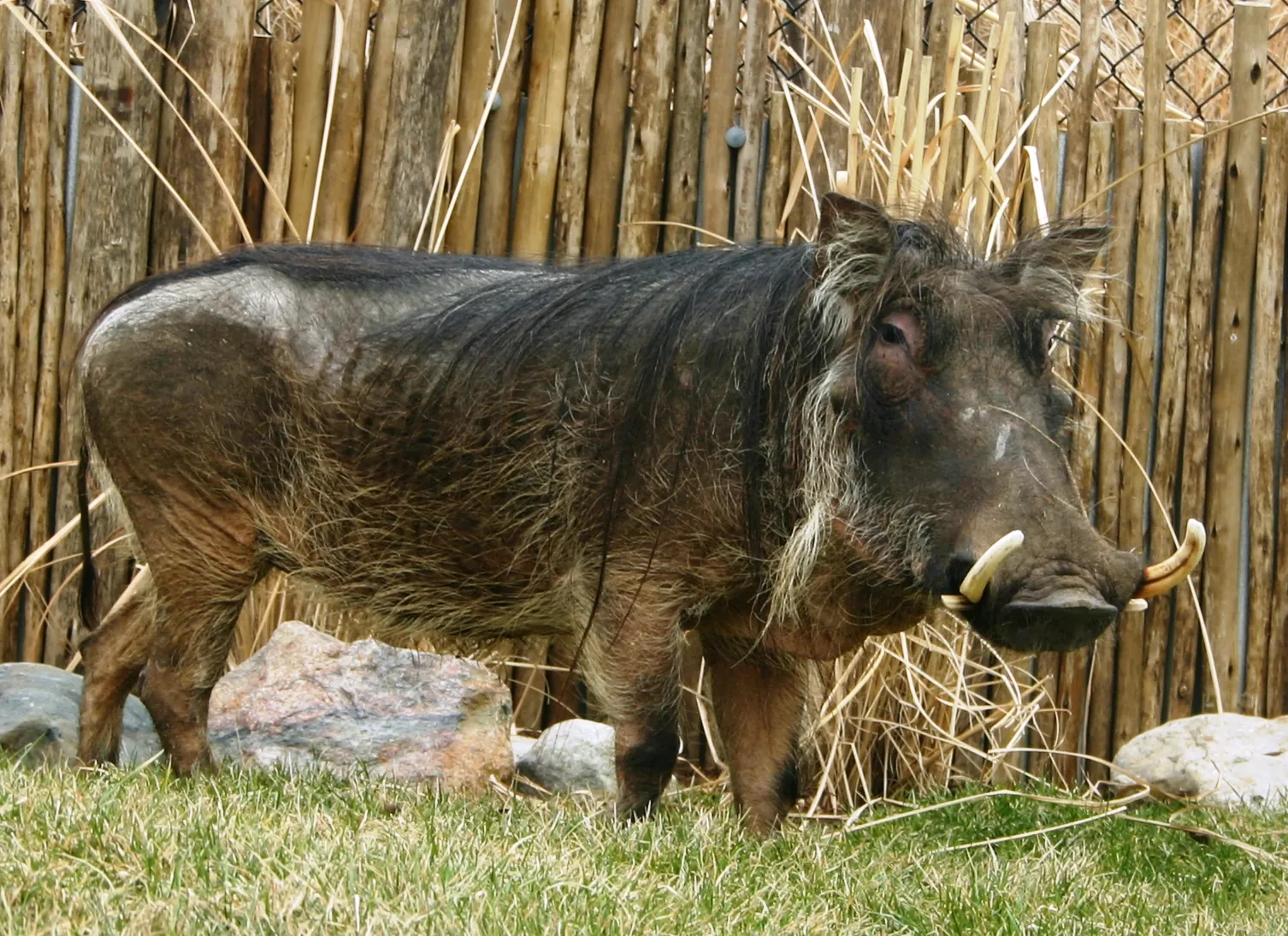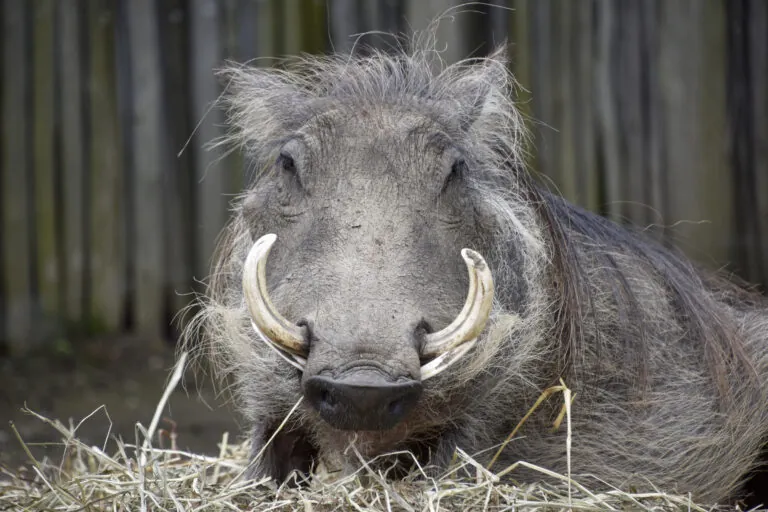Until Holiday Magic Returns to the Zoo!
-
Menu
- Plan Your Visit
- Meet The Animals
- Check Out Events
- Memberships
- Christmas at the Zoo
- About The Zoo
- Support the Zoo
- Conservation
- Education
- Groups & Private Events
- Zoo News
- Contact
- Zoo Store
- Indianapolis Prize
- Global Center for Species Survival
- Schedule
- Donate
- Membership
- Tickets

- Plan Your Visit
- Meet The Animals
- Check Out Events
- Memberships
- Christmas at the Zoo
- About The Zoo
- Support the Zoo
- Conservation
- Education
- Groups & Private Events
- Zoo News
- Contact
- Zoo Store
- Indianapolis Prize
- Global Center for Species Survival

Warthog
Phacochoerus africanus
About
If you think warthogs look like pigs, you’re right! They are a type of pig with four long tusks and several hard bumps on their heads (“warts”) that give them their name. They graze on grasses and use their snout to dig up roots and other plant material. By mixing up the soil, they promote new plant growth. Warthogs like water—they soak in it to cool off and avoid insects. They get a little extra help from birds that ride on their back and eat insects. Warthogs can go several months without drinking water, though—a good adaptation to African habitats with dry seasons.
Warthogs use their strong senses of smell and hearing to find food and avoid predators. They can run fast when they need to—up to 30 miles per hour! At night or when threatened, they retreat into burrows in the ground—they especially like the ones made by aardvarks. Baby warthogs are born in burrows, too. Mothers take care of the young for up to 2 years, living together in groups (“sounders”) with other females. Males live alone or with other males.

Conservation
Warthogs have a low risk of extinction, but their populations are shrinking. They face main threats from habitat loss due to human activity and climate change as well as hunting.
Some areas of the African savanna are facing more droughts from climate change, which reduces the amount of habitat for wildlife. To help combat climate change, the Indianapolis Zoo participates in AES’s Green Power Offset Program. Indianapolis residents also can help offset carbon that they’re burning in fossil fuels through this program.
WHERE ARE THEY AT THE ZOO?

